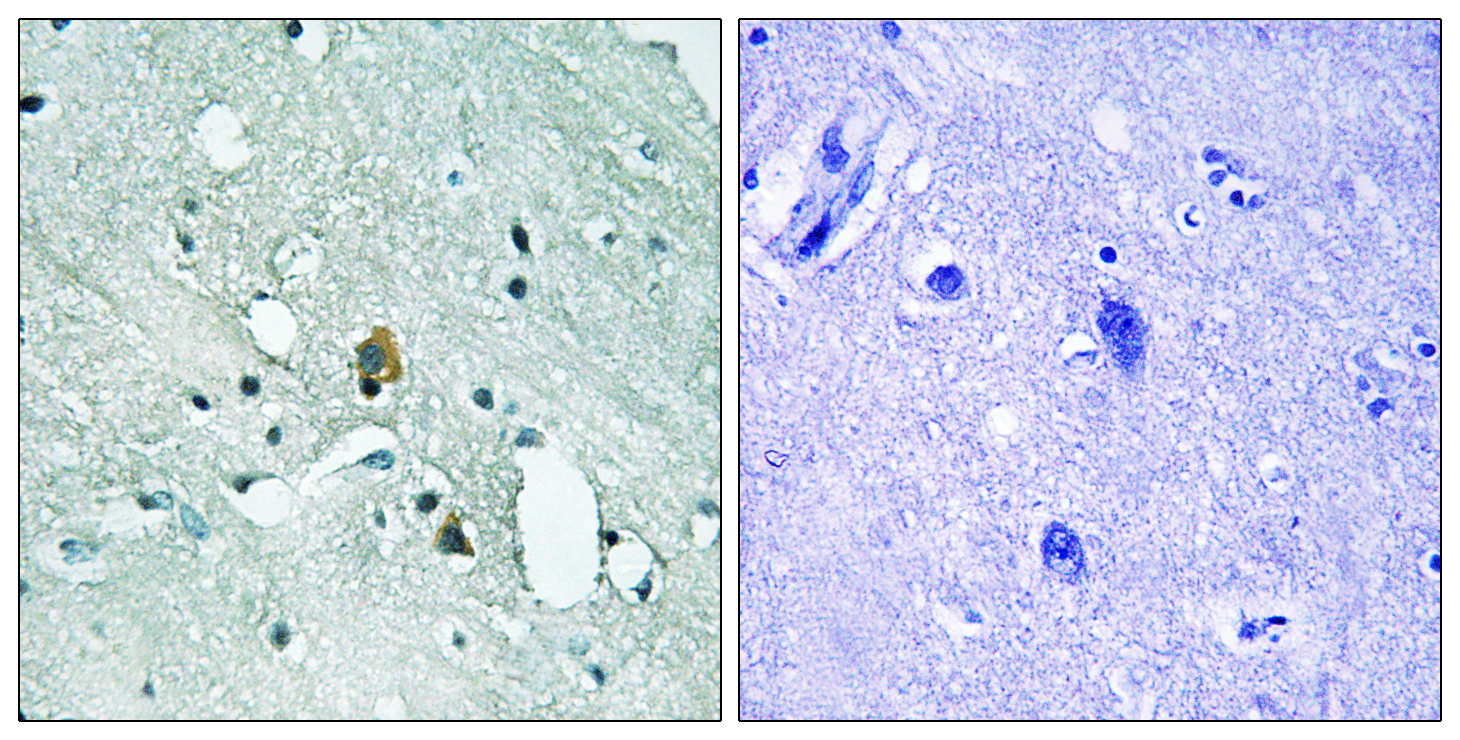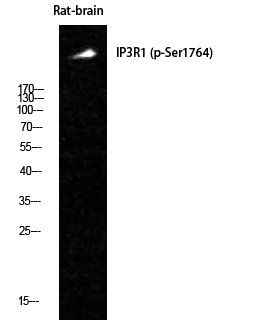产品名称
IP3R-I (phospho Ser1764) Rabbit Polyclonal Antibody
别名
ITPR1; INSP3R1; Inositol 1; 4,5-trisphosphate receptor type 1; IP3 receptor isoform 1; IP3R 1; InsP3R1; Type 1 inositol 1,4,5-trisphosphate receptor; Type 1 InsP3 receptor
蛋白名称
Inositol 1,4,5-trisphosphate receptor type 1
存储缓冲液
Liquid in PBS containing 50% glycerol, 0.5% BSA and 0.02% New type preservative N.
Human Gene Link
http://www.ncbi.nlm.nih.gov/sites/entrez?db=gene&term=3708
Human Swissprot No.
Q14643
Human Swissprot Link
http://www.uniprot.org/uniprotkb/Q14643/entry
Mouse Gene Link
http://www.ncbi.nlm.nih.gov/sites/entrez?db=gene&term=16438
Mouse Swissprot No.
P11881
Mouse Swissprot Link
http://www.uniprot.org/uniprot/P11881
Rat Gene Link
http://www.ncbi.nlm.nih.gov/sites/entrez?db=gene&term=25262
Rat Swissprot Link
http://www.uniprot.org/uniprot/P29994
免疫原
The antiserum was produced against synthesized peptide derived from human IP3R1 around the phosphorylation site of Ser1764. AA range:1730-1779
特异性
Phospho-IP3R-I (S1764) Polyclonal Antibody detects endogenous levels of IP3R-I protein only when phosphorylated at S1764.
稀释度
WB 1:500-2000 ,IHC 1:100 - 1:300. ELISA: 1:5000.. IF 1:50-200
宿主
Polyclonal, Rabbit,IgG
背景介绍
This gene encodes an intracellular receptor for inositol 1,4,5-trisphosphate. Upon stimulation by inositol 1,4,5-trisphosphate, this receptor mediates calcium release from the endoplasmic reticulum. Mutations in this gene cause spinocerebellar ataxia type 15, a disease associated with an heterogeneous group of cerebellar disorders. Multiple transcript variants have been identified for this gene. [provided by RefSeq, Nov 2009],
细胞定位
Endoplasmic reticulum membrane ; Multi-pass membrane protein . Cytoplasmic vesicle, secretory vesicle membrane ; Multi-pass membrane protein . Cytoplasm, perinuclear region . Endoplasmic reticulum and secretory granules (By similarity). .
信号通路
Calcium;Phosphatidylinositol signaling system;Oocyte meiosis;Vascular smooth muscle contraction;Gap junction;Long-term potentiation;Long-term depression;GnRH;Alzheimer's disease;Huntington's disease;
功能
alternative products:There is a combination of three alternatively spliced domains at site SI, SIII and site SII (A and C). Experimental confirmation may be lacking for some isoforms,disease:Defects in ITPR1 are the cause of spinocerebellar ataxia type 15 (SCA15) (SCA15) [MIM:606658]. Spinocerebellar ataxia is a clinically and genetically heterogeneous group of cerebellar disorders. Patients show progressive incoordination of gait and often poor coordination of hands, speech and eye movements, due to degeneration of the cerebellum with variable involvement of the brainstem and spinal cord. SCA15 is an autosomal dominant cerebellar ataxia (ADCA). It is very slow progressing form with a wide range of onset, ranging from childhood to adult. Most patients remain ambulatory.,domain:The receptor contains a calcium channel in its C-terminal extremity. Its large N-terminal cytoplasmic region has the ligand-binding site in the N-terminus and modulatory sites in the middle portion immediately upstream of the channel region.,function:Intracellular channel that mediates calcium release from the endoplasmic reticulum following stimulation by inositol 1,4,5-trisphosphate.,miscellaneous:Calcium appears to inhibit ligand binding to the receptor, most probably by interacting with a distinct calcium-binding protein which then inhibits the receptor.,PTM:Phosphorylated by cAMP kinase. Phosphorylation prevents the ligand-induced opening of the calcium channels.,PTM:Phosphorylated on tyrosine residues.,similarity:Belongs to the InsP3 receptor family.,similarity:Contains 5 MIR domains.,subunit:Homotetramer. Interacts with TRPC4. The PPXXF motif binds HOM1, HOM2 and HOM3. Interacts with RYR1, RYR2, ITPR1, SHANK1 and SHANK3. Interacts with ERP44 in a pH-, redox state- and calcium-dependent manner which results in the inhibition the calcium channel activity. The strength of this interaction inversely correlates with calcium concentration. Part of cGMP kinase signaling complex at least composed of ACTA2/alpha-actin, CNN1/calponin H1, PLN/phospholamban, PRKG1 and ITPR1. Interacts with AHCYL1 (By similarity). Interacts with MRVI1.,tissue specificity:Widely expressed.,
纯化
The antibody was affinity-purified from rabbit antiserum by affinity-chromatography using epitope-specific immunogen.


